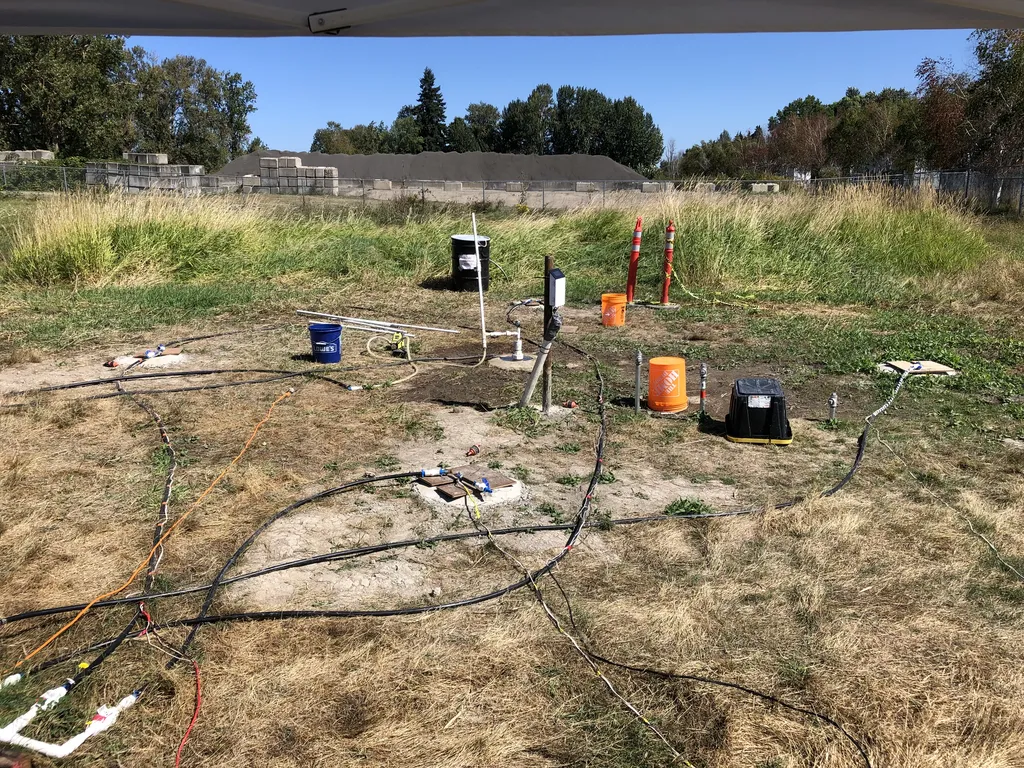In the heart of Chengdu, China, researchers at Southwest Jiaotong University have been delving into the intricate world of soil mechanics, with findings that could significantly impact the energy sector’s approach to seismic safety. Led by ZHANG Yingbin from the School of Civil Engineering, a recent study published in *Yantu gongcheng xuebao* (translated to *Rock and Soil Engineering*) has shed new light on how initial static shear stress and the direction of cyclic loading influence the liquefaction characteristics of saturated dense sand.
The study, a series of consolidated undrained multi-directional cyclic simple shear tests, revealed that the failure modes of saturated dense sand are primarily cyclic activity and cumulative plastic strain. These modes are significantly influenced by initial shear stress. “The existence of initial shear stress will reduce the liquefaction resistance of saturated dense sand,” ZHANG explained, highlighting a critical factor in understanding soil behavior under seismic conditions.
The research found that the liquefaction resistance of saturated dense sand under vertical loading mode is approximately 5% to 7% higher than that under parallel loading mode. This discovery could have profound implications for the energy sector, particularly in the design and construction of infrastructure in seismically active areas. Understanding these dynamics can lead to more robust and safer structures, reducing the risk of liquefaction-induced failures during earthquakes.
One of the most compelling findings was the relationship between the cumulative rate of energy loss and the increase in initial shear stress. “The cumulative rate of energy loss increases with the increase of initial shear stress, which is the internal reason for the decrease of liquefaction resistance of saturated dense sand,” ZHANG noted. This insight provides a deeper understanding of the energy dynamics involved in soil liquefaction, offering a more nuanced approach to predicting and mitigating seismic risks.
The study also revealed that the normalized curves of residual pore pressure and energy loss of saturated dense sand show a linear relationship in the logarithmic coordinate. This finding could pave the way for more accurate pore pressure models and energy-based methods, enhancing the predictive capabilities of soil behavior under seismic loading.
For the energy sector, these findings are particularly relevant. As infrastructure projects increasingly venture into seismically active regions, the ability to accurately predict and mitigate liquefaction risks becomes paramount. The research conducted by ZHANG and his team at Southwest Jiaotong University offers valuable insights that could shape future developments in soil mechanics and seismic engineering.
In the broader context, this research underscores the importance of understanding the fundamental principles governing soil behavior. As the energy sector continues to expand into new territories, the need for robust and reliable soil mechanics models becomes ever more critical. The work published in *Yantu gongcheng xuebao* not only advances our scientific knowledge but also provides practical tools for engineers and researchers working in seismic risk assessment and mitigation.
As we look to the future, the findings from this study could lead to more innovative and effective strategies for ensuring the safety and stability of energy infrastructure in earthquake-prone areas. By integrating these insights into design and construction practices, the energy sector can better prepare for and mitigate the risks associated with seismic activity, ultimately contributing to a safer and more resilient built environment.

